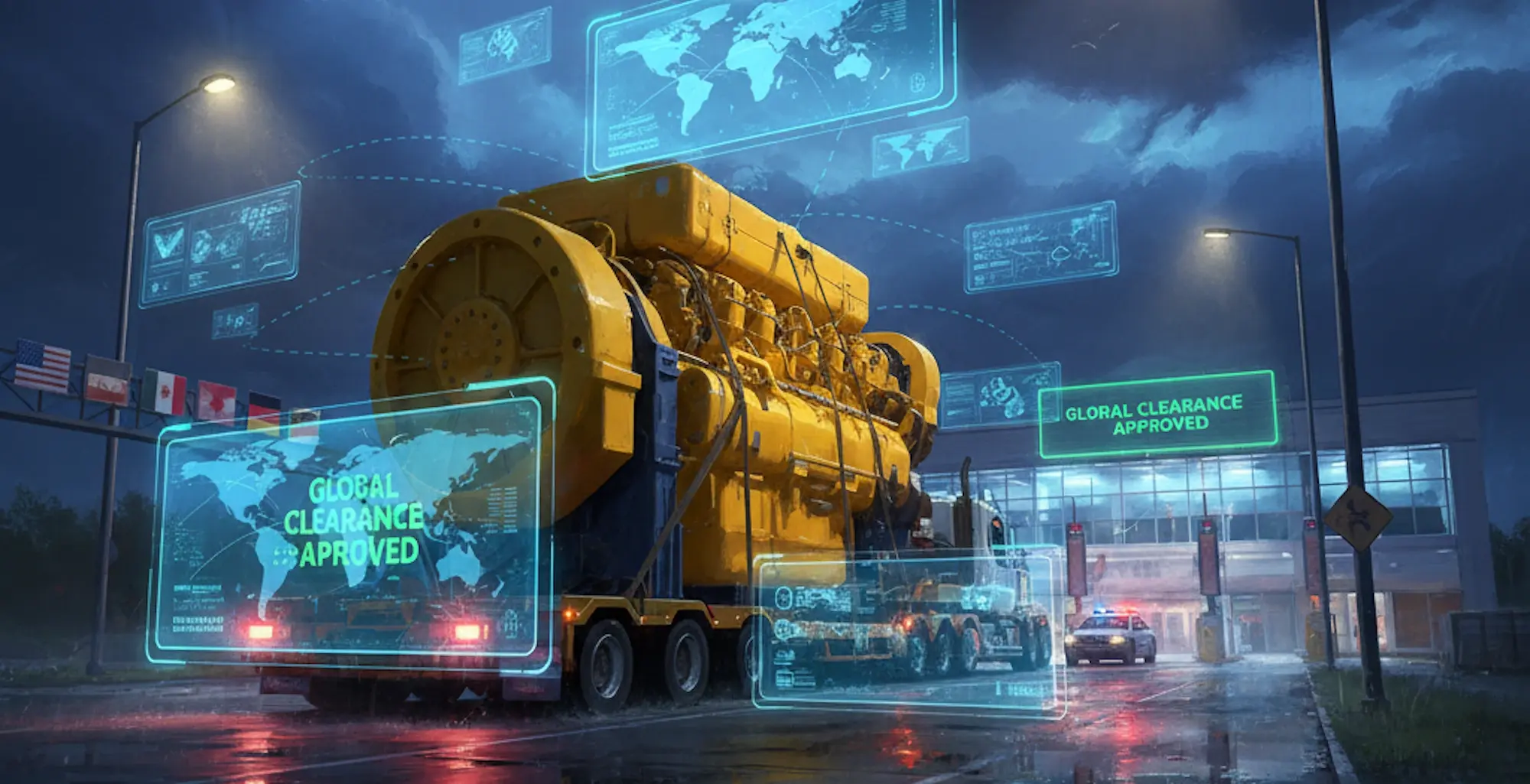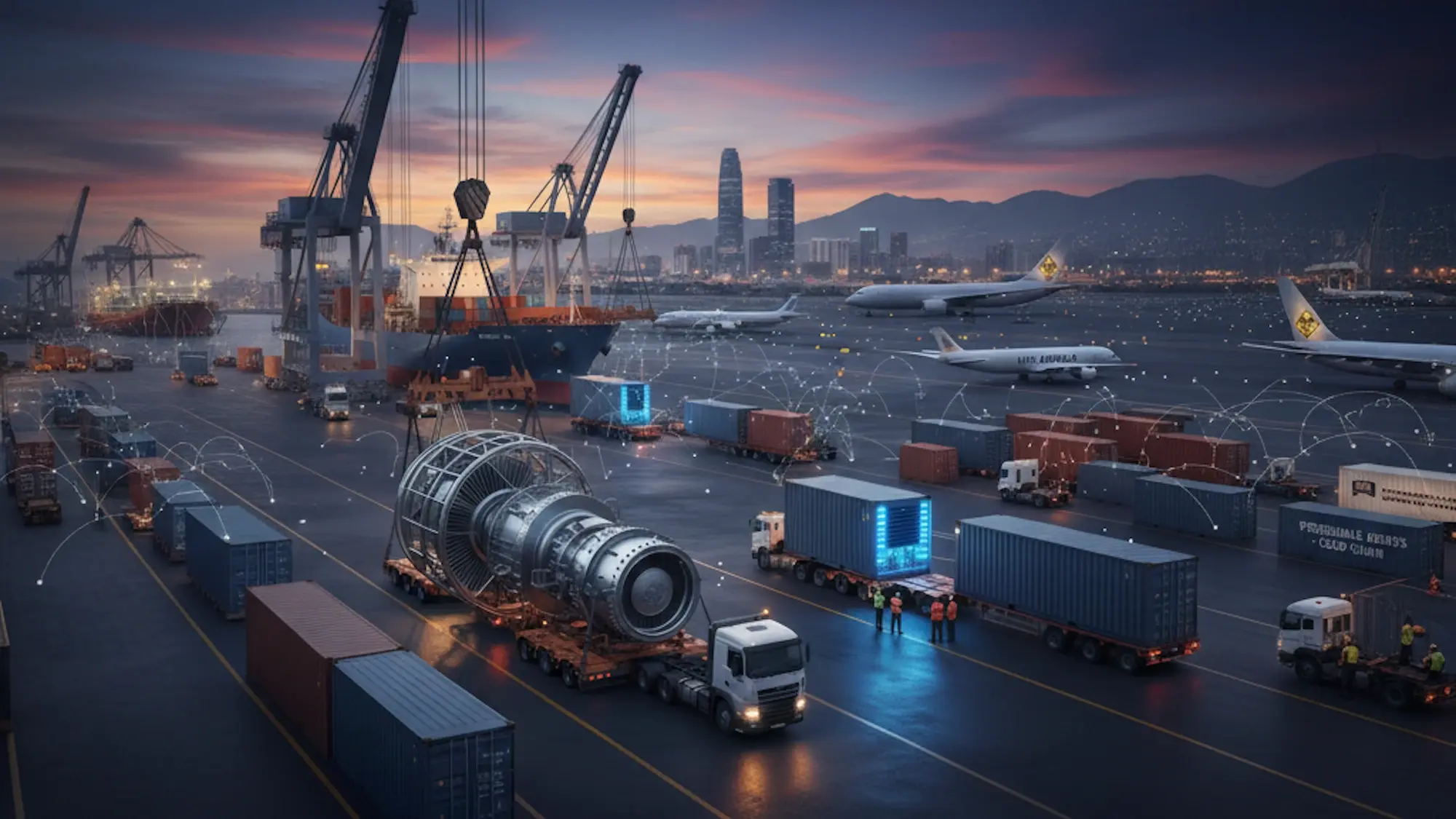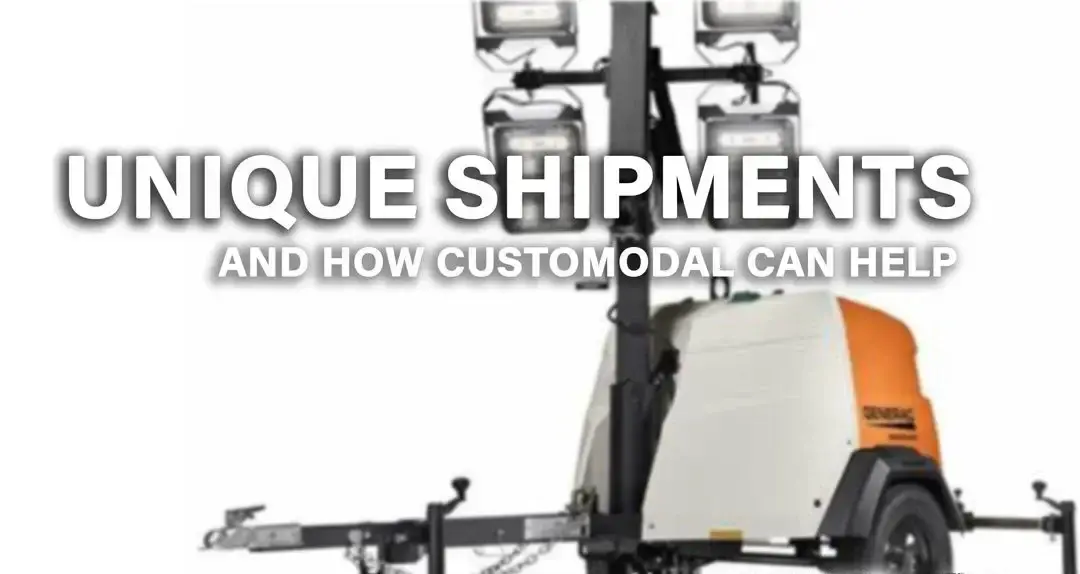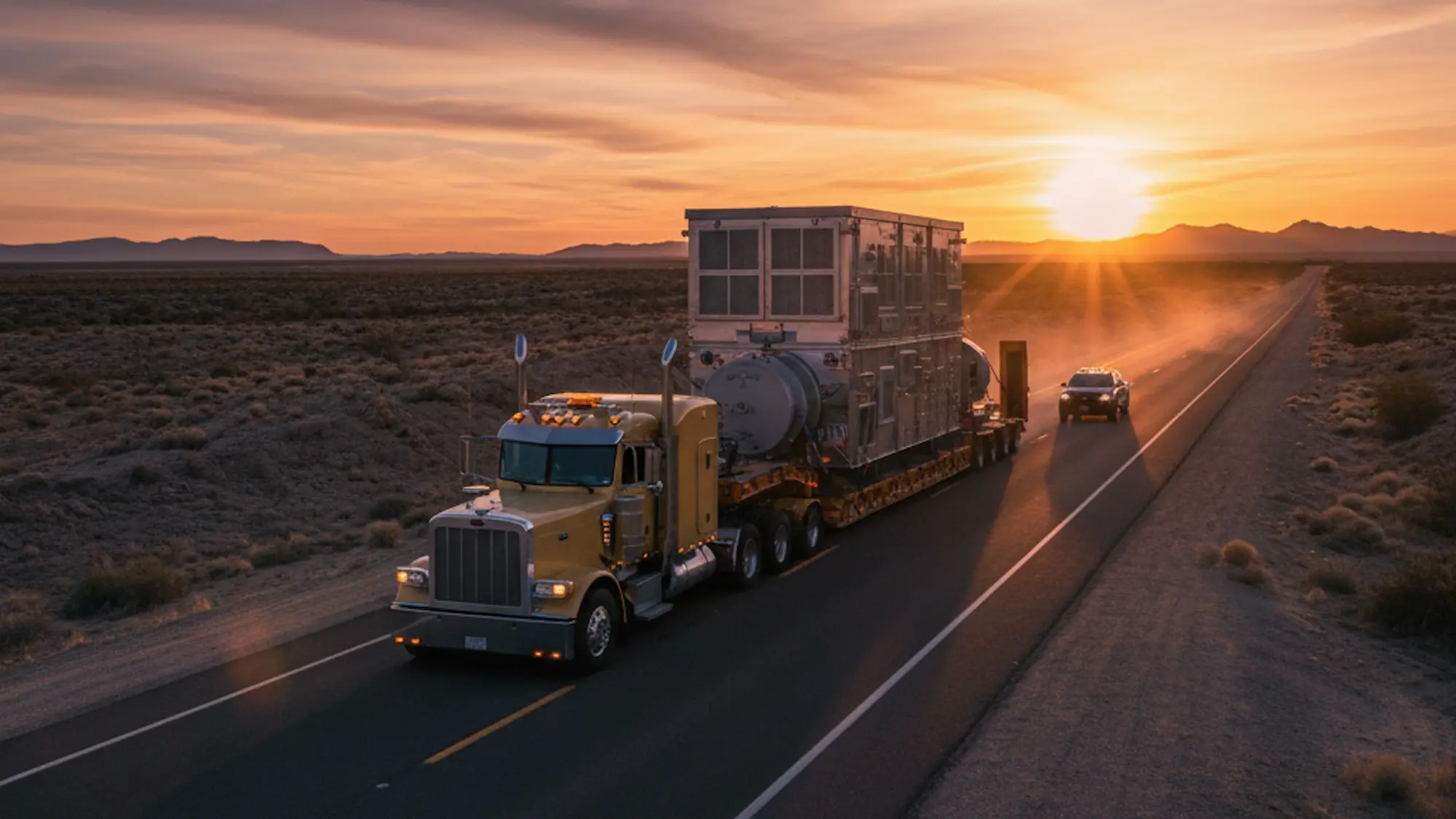
I. The Urgent Need for Uptime
A critical machine is down. Production has stopped. The clock is ticking, and every hour of downtime costs thousands. You've sourced the replacement part—often an oversized, urgent equipment component for critical infrastructure—and arranged for the fastest possible shipment, maybe hot-shot trucking or dedicated air freight. The race against the clock has begun.
But here is the reality check: your logistical challenge is only half solved.
When dealing with a machine-down situation, speed has two enemies. The first is obvious: Transit Speed. This is solved by paying a premium for dedicated transportation. The second enemy is the silent killer of fast transit: Regulatory Friction.
The fastest truck or plane in the world is useless if the shipment sits for days in a holding yard, waiting for customs clearance for heavy equipment or a necessary transport permit. This regulatory friction is exactly where most generic logistics strategies fail. They focus on the physical move, but overlook the paperwork and compliance necessary to make the physical move legal and seamless.
The truth is that achieving heavy machinery uptime across international borders demands a specialized strategy. In this decision-stage moment, the question isn't if you need a part; it's how you guarantee its arrival. The answer lies in making sure that customs and permitting are initiated before the freight even moves. This proactive approach ensures regulatory compliance becomes an accelerator, not an anchor.
II. The Documentation Gauntlet: Avoiding the Customs Hold
Why are customs officials so interested in your critical part?
For generic freight, a customs check is simple. For your urgent component, the stakes are dramatically higher because the item itself is complex. It's not just a box; it's a high-value asset, often oversized, and sometimes a complete engine or self-propelled machinery, which carries additional regulatory scrutiny. A customs hold on a $75,000 part can lead to a multi-million-dollar loss in production time.
To guarantee quick customs clearance for heavy equipment, you must eliminate any reason for a border agent to flag the shipment. This requires meticulous preparation of non-negotiable documentation.
Essential Documents for Urgent Parts Delivery
-
Commercial Invoice: This must be perfect. It has to accurately reflect the true value and the clear purpose of the item. This is crucial for duty calculation. Any discrepancy here is an immediate flag.
-
Harmonized System (HS) Codes: This is arguably the most critical piece of data. The correct 6- to 10-digit HS Code is mandatory for determining duties and taxes. An error in classification is not a simple paperwork mistake; it can lead to immediate seizure or a lengthy, costly delay. Accuracy in HS coding is non-negotiable for anyone navigating complex global logistics.
-
Certificate of Origin: This document is required to leverage tariff agreements, such as USMCA. By proving where the component was manufactured, you can often minimize or eliminate import duties, which ultimately speeds up the clearance process.
Specialized Regulatory Hurdles (Beyond the Basics)
Beyond standard commerce rules, urgent equipment parts often trigger specialized regulations.
-
EPA/Emissions: If you are importing an engine, a power unit, or any self-propelled machinery into a country like the US, compliance with strict EPA/Emissions standards is mandatory. The necessary documentation must be prepared proactively.
-
Used Equipment/Cores: When importing a used part (often called a core), extra diligence is required. This often relates to cleanliness, specifically USDA or phytosanitary concerns, to prevent the contamination of foreign soil.
The DDP (Delivered Duty Paid) Advantage
For oversized, urgent equipment delivery, your goal is to land the item at the recipient’s site without any surprise costs or hold-ups. This is why Duty Paid Shipping (DDP) is often the fastest, most reliable method for clearance.
By paying all duties, taxes, and fees upfront, you guarantee that the recipient receives the part without any unexpected payment demands. DDP shifts the administrative burden to the shipper—or, ideally, the specialized logistics partner—and removes the customs transaction from the critical path of the final-mile delivery.
III. The Permit Maze: Conquering Oversized Load Compliance
Your shipment has cleared customs. Excellent. But if the part is too big, the journey is just beginning.
What exactly qualifies as an oversized or "Over-Dimensional (OD)" load? Simply put, it is any freight that exceeds the standard legal limits for width, height, length, or weight. And here is the core challenge: there is no standardized federal or global regulation for OD loads.
Regulations—the actual size limits, the curfew hours, and the travel holidays—change at every state, provincial, or country line. A specialized Oversized Load Compliance plan is mandatory.
The Permit-Acquiring Process for Oversized Load Compliance
Successfully executing Over-Dimensional Load logistics requires moving far beyond simply calling a truck.
-
Meticulous Route Planning: The process starts weeks before the move. Planners must check bridges, vertical clearances, road widths, and even seasonal frost laws along the entire route. If the part is 12 feet tall, every overpass on the journey must be certified at 12 feet, 6 inches or higher.
-
Transport Permit Acquisition: This is a jurisdiction-by-jurisdiction battle. You must secure individual, non-transferable permits for every single state, province, or country the load touches. Acquiring these permits can take hours to days, depending on the complexity of the route and the processing backlog of the jurisdiction.
-
Required Escorts/Pilot Cars: For safety and compliance, loads above certain dimensions require specialized pilot cars and certified escorts. This requires careful coordination, specialized certifications for the drivers, and scheduling based on state-mandated ratios (e.g., one front escort and one rear escort).

The True Cost of a Missing Permit
The financial risk of bypassing the necessary transport permit acquisition is enormous. If a truck is pulled over, fined, and held on the side of the road until the correct paperwork is secured, it can waste days of costly downtime. The fine itself is often negligible compared to the lost production time.
- Data Point: Permits for complex, multi-jurisdictional routes often take 3 to 5 business days to process and approve. A true specialist understands that this time must be factored in and initiated while the part is being manufactured or prepared, not after it is ready to ship.
IV. The Seamless Solution: Proactive Coordination is Key
The standard carrier treats permits and customs as an afterthought—an administrative step after the truck is loaded. This is a fatal flaw in Specialized Freight Management (SFM) for urgent parts.
The SFM Difference: Preparation Over Reaction
Specialized providers view compliance tasks—permits, customs, import/export licenses—as a mission-critical pre-clearance task.
Instead of relying on the truck driver to manage the permits, a specialized partner manages the entire compliance chain. This includes the customs brokerage (for paperwork) and the heavy haul logistics (for permitting) simultaneously. This is the only way to avoid regulatory friction entirely.
The Single Point of Accountability
When a delay happens, is it the customs broker's fault, the heavy haul specialist's fault, or the carrier's fault?
A single provider that orchestrates both the paperwork and the physical move eliminates communication gaps and prevents finger-pointing, which costs you precious hours. This logistics approach guarantees that one expert is accountable for the entire door-to-door transit, including all compliance steps.
Proactive Planning Case Study
Consider a scenario: a client needed a large replacement engine block—which was both oversized and required customs clearance—delivered from the US to an industrial site in Alberta, Canada.
A specialized provider initiated all provincial permits (Alberta, Saskatchewan) while the engine was being loaded. They pre-cleared the shipment with Canadian Customs using DDP terms and the correct HS codes.
The result? The dedicated truck crossed the border, passed through the required jurisdictions, and delivered the engine without a single minute of border or roadside delay, minimizing the client's downtime by nearly 48 hours. This is the power of turning regulatory friction into a smooth, seamless delivery.
V. Stop Risking Downtime on Paperwork
Moving oversized, urgent equipment parts across international borders is complex. The total logistical challenge is regulatory, not just physical. To achieve true heavy machinery uptime, you must proactively manage the complex maze of customs and permits. The fastest total transit time includes a commitment to perfect paperwork and pre-approved travel permits.
When your critical asset is waiting on a part, you can't afford to have that part wait on paperwork. Customodal specializes in handling the most complex domestic and global parts logistics—including all customs, compliance, and oversized load permits—to guarantee the fastest total transit time. We eliminate regulatory friction and provide the accountability you need.
Stop risking downtime on paperwork. Partner with expertise that guarantees compliance is an accelerator, not an anchor.




